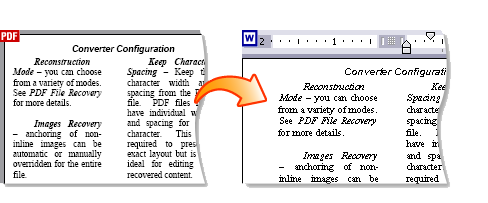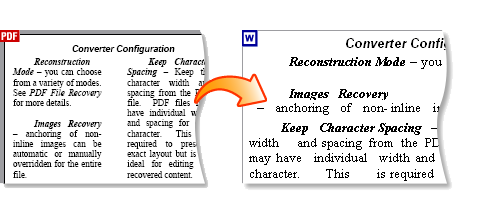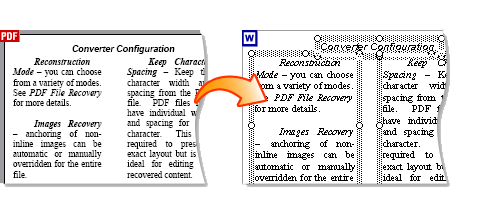Reconstruction Modes
Solid Framework supports three "Reconstruction Modes".
The one that is best for you depends on what you intend to do with the document that you create.
- Flowing - maximizes editability while still maintaining good consistency with the original pdf.
- Continuous - maximizes readability at the expense of consistency with the original pdf.
- Exact - uses text boxes to maximize consistency with the original pdf at the expense of editability.
Flowing
If the PDF contains "Newspaper" style columns then these will be reproduced in the generated document.
The formatting and layout will be retained and the document will have page breaks where the original had page breaks.
If you edit a page then the rest of the document will move up or down based on your edits. This is typically the way that people use "Word".

Continuous
If the PDF contains "Newspaper" columns then the content of these will be included in the generated document, with the text in the first column presented before that of the next column and so on, rather than being side by side.
The formatting of text will retained, but the layout of the document, and the location of page breaks may be different from the original. This mode is particularly useful if you are interested in the content of the document and intend to edit or reformat it extensively, or perhaps translate it into another language.

Exact
In this mode the generated document will look very similar to the original PDF. Page breaks will be in the same location, as will tables and columns. The downside of this is that the resulting document is difficult to modify, since the content is all contained within text boxes.
Before using this mode, ask yourself why you want to convert a PDF to a Word document that looks exactly the same as the PDF - if you want to make significant changes then one of the other modes may be more useful.
